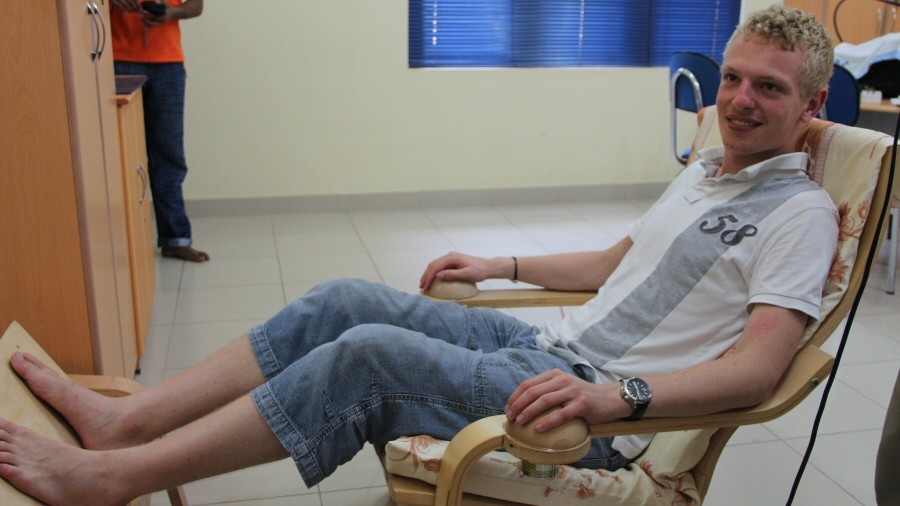HapticChair
‘Haptic Chair’ is a sensory substitution interface that translate music into vibrotactile feedback, providing rich musical experiences to deaf users via ‘full body haptic stimulation’. After the formal studies were completed, we interacted with our deaf participants in a more informal way that provided insight into how our system worked in a more natural environment. Many of the participants told us that they could identify the rhythm of the song and could ‘hear’ the song much better compared to when using standard hearing aids. Another user mentioned that he wanted to use headphones together with the chair so that he could detect the sound through the headphones as well. A few participants who were born with profound deafness said that this was the first time they actually ‘heard’ a song and they were extremely happy about it. They expressed a wish to buy a similar Haptic Chair and connect it to the radio and television at home. It was observed that majority of the profoundly deaf participants appeared to be ‘hearing’ something when they were sitting on the chair. The Haptic Chair was installed at the Dr Reijntje’s School for the Deaf in Moratuwa, Sri Lanka for more than 7 years which now has become a platform for deaf students and their hearing teachers to connect and communicate via vibrations generated by sound.




PUBLICATIONS
Scaffolding the Music Listening and Music Making Experience for the Deaf
Petry, B., Huber, J. and Nanayakkara, S.C., 2018. Scaffolding the Music Listening and Music Making Experience for the Deaf. In Assistive Augmentation (pp. 23-48). Springer, Singapore.
Enhancing Musical Experience for the Hearing-impaired using Visual and Haptic Displays
Nanayakkara S.C., Wyse L., Ong S.H. and Taylor E. “Enhancing Musical Experience for the Hearing-impaired using Visual and Haptic Inputs”, Human-Computer Interaction, 28 (2), pp.115-160, 2013.
The Haptic Chair as a Speech Training Aid for the Deaf
Nanayakkara, S.C., Wyse, L. and Taylor, E.A., 2012, November. The haptic chair as a speech training aid for the deaf. In Proceedings of the 24th Australian Computer-Human Interaction Conference (pp. 405-410).
Effectiveness of the Haptic Chair in Speech Training
Nanayakkara, S.C., Wyse, L. and Taylor, E.A., 2012, October. Effectiveness of the haptic chair in speech training. In Proceedings of the 14th international ACM SIGACCESS conference on Computers and accessibility (pp. 235-236).
An enhanced musical experience for the deaf: design and evaluation of a music display and a haptic chair
Nanayakkara, S. C., Taylor, E., Wyse, L. and Ong, S. H. 2009. An enhanced musical experience for the deaf: design and evaluation of a music display and a haptic chair. In Proceedings of the SIGCHI Conference on Human Factors in Computing Systems (CHI '09). Association for Computing Machinery, New York, NY, USA, 337–346.